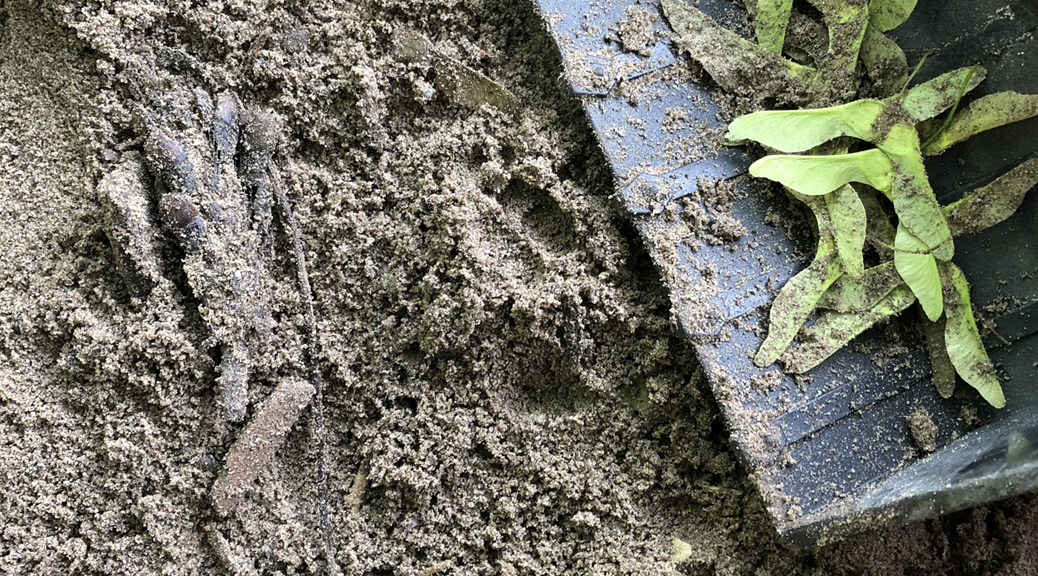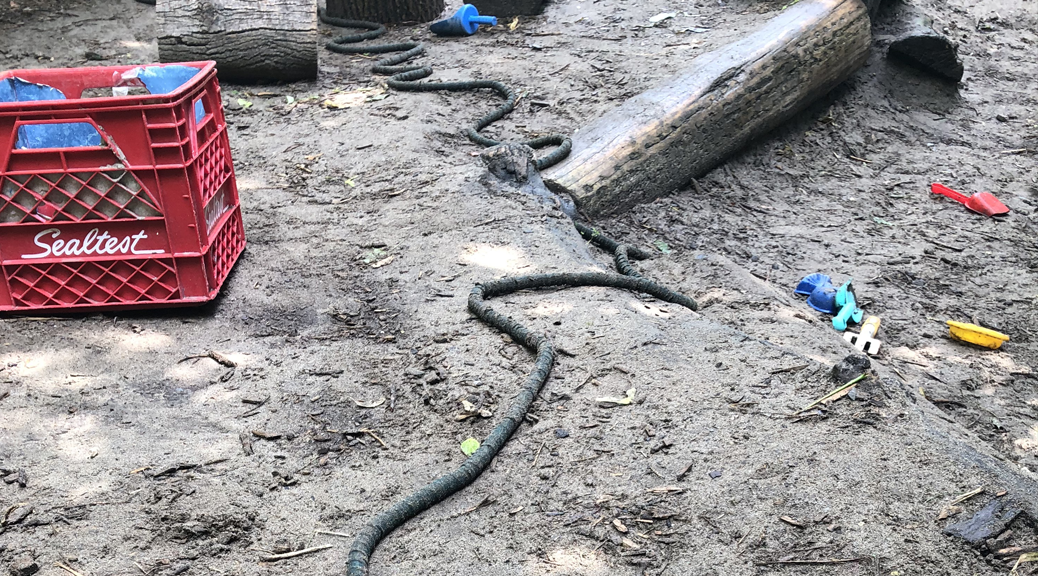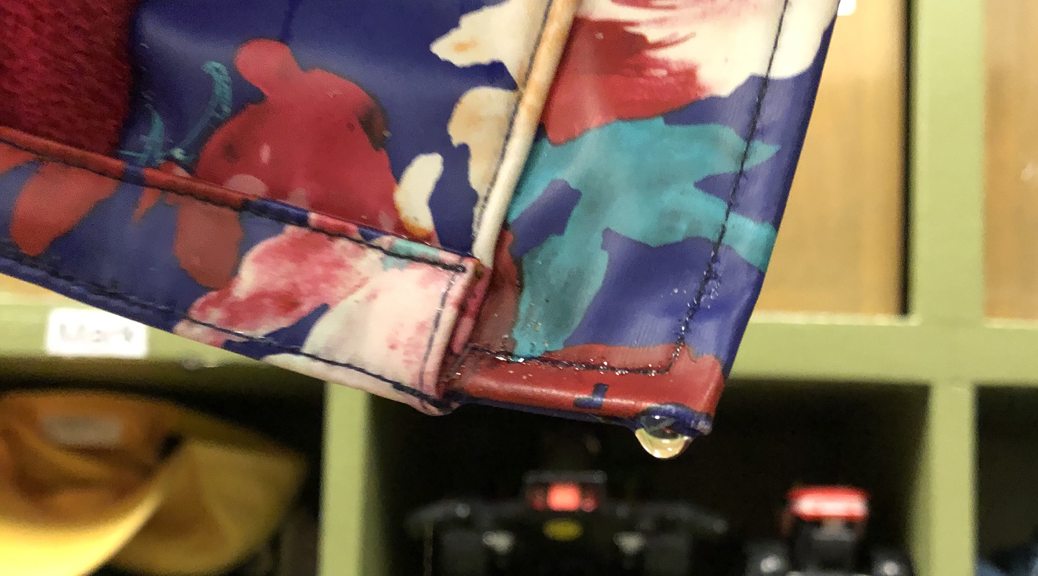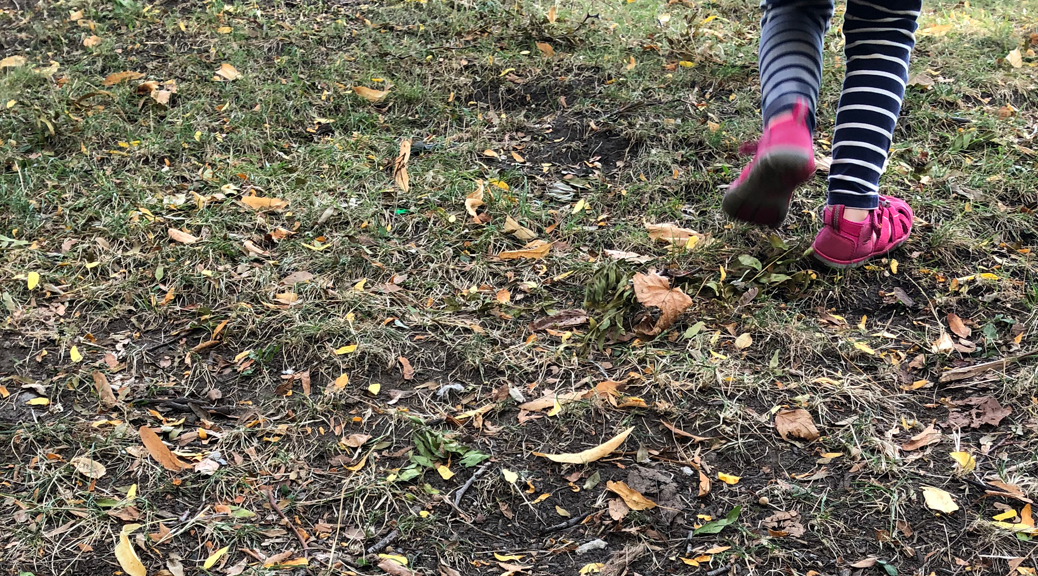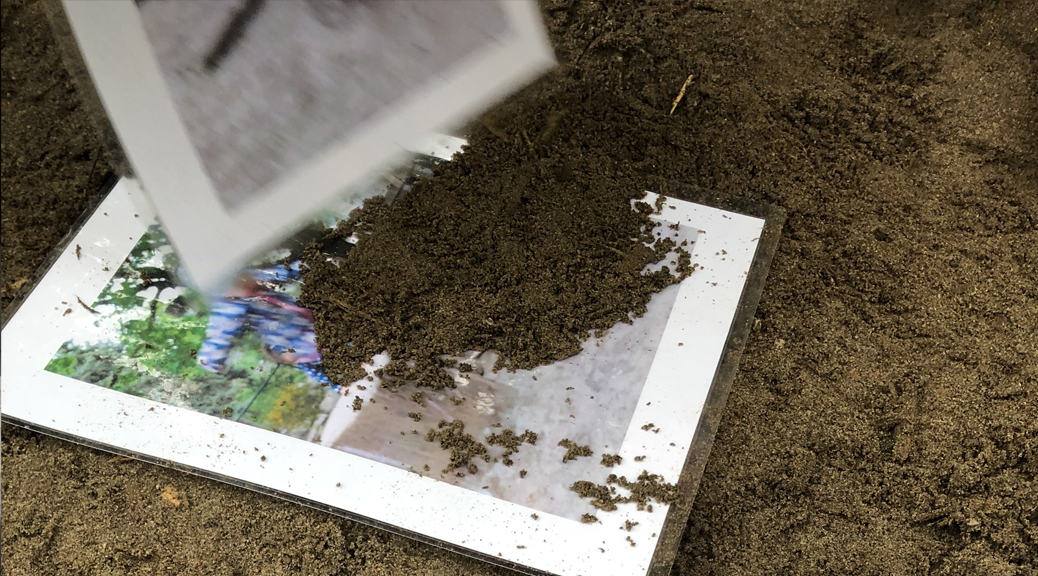By Andrea Thomas with Nicole Land
The warm season this year has flown by, but I remember very distinctly all the climbing and jumping off of surfaces that first captured our attention when we thought about movement this spring. The climbing and jumping always creates some internal conflicts for me: is it safe for children to be climbing up on rocks, stumps, and trees? Is climbing safe for the plants and other living things in the environment?
The playground was made for gross motor movements of the children, right? Are they the only ones who matter? For years, some beautiful tiger lilies used to grow in the space at the top of the rock wall by the toddler fence. But over the past couple of seasons, these plants have been so trampled each spring by children who climb up the rock wall and jump, that although the green shoots still spring up, the plants are stunted and the flowers no longer bloom. As an adult in the environment, how do I decide what it more important? Where do I set the border/boundary? When we make borders, what lives are we paying attention to and what lives are we not valuing? This yard is a place where things live and die: tiger lilies get trampled, animals make homes that are removed, leaves get picked, and ants get stepped on. Because we have a “natural playground” – and because squirrels, rats, raccoons, trees, moss, wasps, and snails live here – we can ask certain questions. Even more, because we are part of this place, we have to ask certain questions. We have an ethical responsibility to think about how our human moving is entangled with the possibilities that other lives have for moving in the yard. How does our moving activate our ethical and political choices to pay attention to certain lives and not others? Is it more important to let the children test their skills and explore, climb and jump wherever they want? Or do I teach a responsibility to care with these plants and flowers? In noticing how our moving is entangled with the yard, the familiar idea that the yard is a space just (or primarily) for children’s skill development becomes unsettled. What happens when we pay attention together with children to how movement connects us within a place? How can we notice how human movements impact plants and flowers – and, how plants and flowers shape human moving. How can we figure out how to move together?
Continue reading Plastic Toys, Playground Spaces, and Moving with the Yard →


